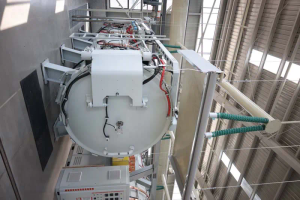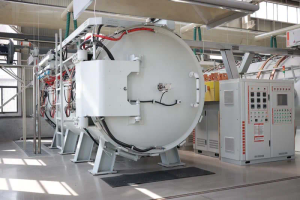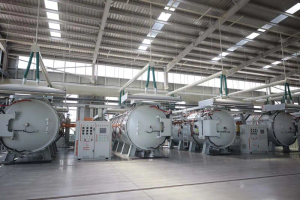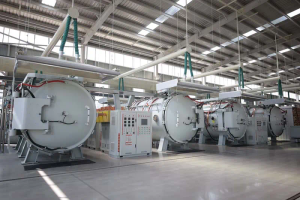Improving Efficiency with Graphite Steam Ejector Condensers
Improving Efficiency with Graphite Steam Ejector Condensers
The need for enhanced efficiency in industrial processes is becoming increasingly critical as industries strive to reduce operational costs and minimize environmental impacts. One innovative solution that has gained traction in recent years is the use of graphite steam ejector condensers. These devices combine advanced materials and engineering principles to improve thermal efficiency, reduce energy consumption, and streamline operations. This article delves into the fundamentals of graphite steam ejector condensers, their advantages, applications, and the future of this technology in industrial settings.
Understanding Graphite Steam Ejector Condensers
Graphite steam ejector condensers are mechanical devices designed to condense steam efficiently while removing non-condensable gases from a system. Unlike traditional condensers, which often rely on water or other cooling mediums, graphite condensers utilize the unique properties of graphite to enhance heat exchange processes.
The primary function of these condensers is to convert steam back into water, enabling the recycling of water in a closed-loop system. This not only conserves water but also reduces the energy required for heating. The incorporation of graphite into the design allows for improved thermal conductivity and resistance to corrosion, making these systems durable and efficient.
Key Features of Graphite Steam Ejector Condensers
1. High Thermal Conductivity
Graphite is known for its exceptional thermal conductivity, which allows for rapid heat transfer. This property is essential in steam ejector condensers, where efficient heat exchange is crucial for maintaining operational effectiveness. By utilizing graphite, these condensers can achieve higher rates of heat removal compared to conventional materials.
2. Corrosion Resistance
In many industrial applications, condensers are exposed to harsh environments and corrosive substances. Graphite exhibits remarkable resistance to corrosion, ensuring longevity and reliability in operations. This durability reduces maintenance costs and downtime associated with repairs or replacements.
3. Compact Design
The lightweight and space-efficient nature of graphite allows for more compact designs of steam ejector condensers. This is particularly beneficial in facilities where space is a premium, enabling industries to install more units without requiring significant modifications to existing infrastructure.
![]()
4. Enhanced Performance
The unique design of graphite steam ejector condensers enables them to operate effectively at various pressures and temperatures. This versatility makes them suitable for a wide range of applications across different industries, from chemical processing to power generation.
Applications of Graphite Steam Ejector Condensers
Graphite steam ejector condensers find applications in various sectors due to their efficiency and versatility. Some of the key industries benefiting from this technology include:
1. Power Generation
In power plants, steam ejector condensers play a critical role in maximizing energy output and efficiency. By condensing steam back into water, these systems allow for the recycling of water within the cooling cycle, thereby improving overall plant performance.
2. Chemical Processing
The chemical industry often deals with high-temperature processes and volatile compounds. Graphite steam ejector condensers can efficiently manage the condensation of steam and the removal of non-condensable gases, ensuring safe and effective operation.
3. Food and Beverage
In the food and beverage sector, maintaining stringent hygiene standards is paramount. Graphite condensers can be designed to meet these standards while providing efficient steam condensation, making them ideal for applications such as sterilization and pasteurization.
4. Pharmaceutical Manufacturing
Pharmaceutical processes require precise temperature control and the removal of impurities. Graphite steam ejector condensers help maintain optimal conditions, ensuring product quality and compliance with regulatory standards.
Benefits of Implementing Graphite Steam Ejector Condensers
1. Increased Energy Efficiency
One of the most significant advantages of using graphite steam ejector condensers is their ability to enhance energy efficiency. By improving heat transfer rates and reducing energy requirements for cooling, these systems can lead to substantial cost savings over time.
2. Lower Water Consumption
With their capacity to recycle condensed water, graphite steam ejector condensers contribute to lower water consumption. This is especially important in regions facing water scarcity and aligns with global efforts toward sustainable practices.
3. Reduced Carbon Footprint
![]()
By optimizing energy use and conserving water, industries can significantly reduce their carbon footprint. The implementation of graphite steam ejector condensers supports corporate sustainability goals and enhances graphite condenser overall heat transfer coefficient environmental stewardship.
4. Long-Term Cost Savings
While the initial investment in graphite steam ejector condensers may be higher than traditional systems, the long-term savings associated with reduced energy consumption, lower maintenance costs, and extended equipment lifespan make them a financially sound choice.
Challenges and Considerations
Despite their numerous advantages, the adoption of graphite steam ejector condensers is not without challenges. Industries must consider the following factors before implementation:
1. Initial Investment
The upfront cost of installing graphite steam ejector condensers can be a barrier for some organizations. However, it is essential to evaluate the long-term savings and return on investment when weighing this consideration.
2. Technical Expertise
![]()
The successful integration of graphite condensers into existing systems requires specialized knowledge and expertise. Companies may need to invest in training or hire experienced personnel to ensure effective implementation.
3. Compatibility with Existing Systems
Before adopting graphite steam ejector condensers, organizations must assess the compatibility of these systems with their current infrastructure. A thorough analysis can help identify any modifications needed to facilitate smooth integration.
Future Trends in Graphite Steam Ejector Condensers
As industries continue to prioritize efficiency and sustainability, the future of graphite steam ejector condensers looks promising. Emerging trends in this field include:
1. Advanced Materials
Research into new materials that can complement or enhance the properties of graphite is ongoing. Innovations in composite materials may lead to even greater efficiency and durability in steam ejector condenser applications.
2. Smart Technologies
The integration of smart technologies, such as IoT sensors and data analytics, could revolutionize the operation of graphite steam ejector condensers. Real-time monitoring and predictive maintenance capabilities will enhance efficiency and reduce downtime.
3. Regulatory Drivers
Government regulations focused on energy efficiency and environmental protection will likely encourage more industries to adopt advanced technologies like graphite steam ejector condensers. Compliance with these regulations will drive innovation and investment in efficient systems.
Conclusion
Graphite steam ejector condensers represent a significant advancement in industrial efficiency and sustainability. Their unique properties and capabilities enable industries to optimize energy use, reduce water consumption, and minimize environmental impact. While challenges remain, the benefits of implementing these systems far outweigh potential obstacles. As industries continue to evolve, the adoption of graphite steam ejector condensers will play a pivotal role in shaping a more efficient and sustainable future.
https://oaicon.com/



